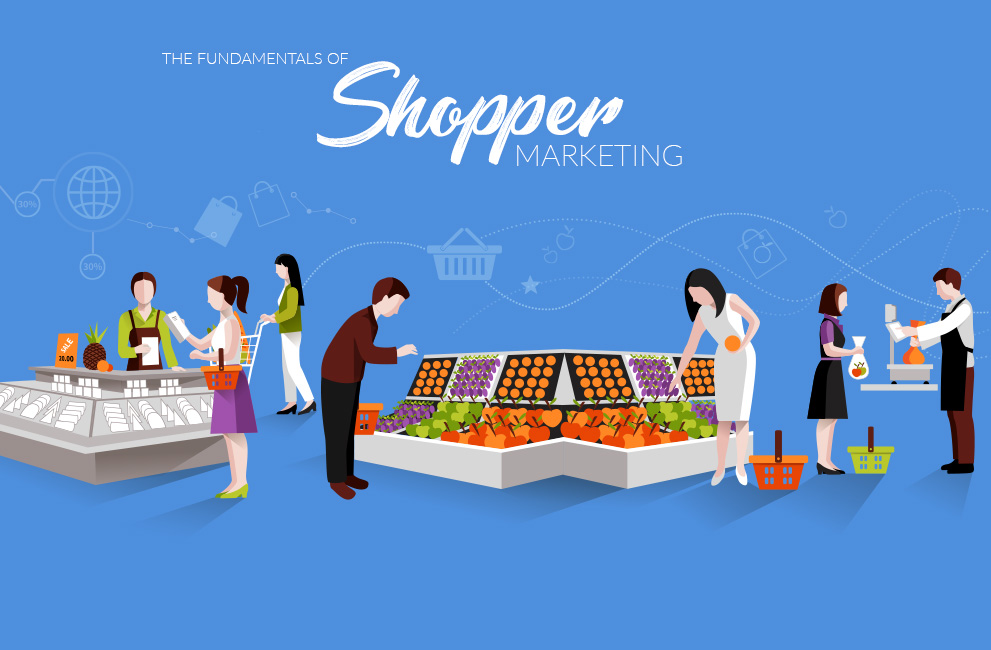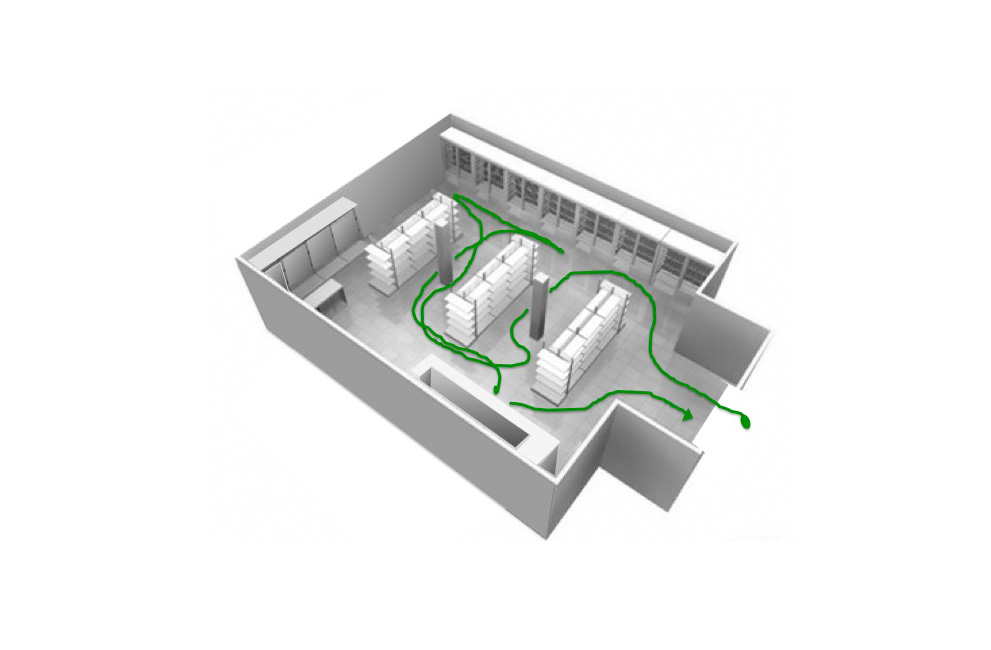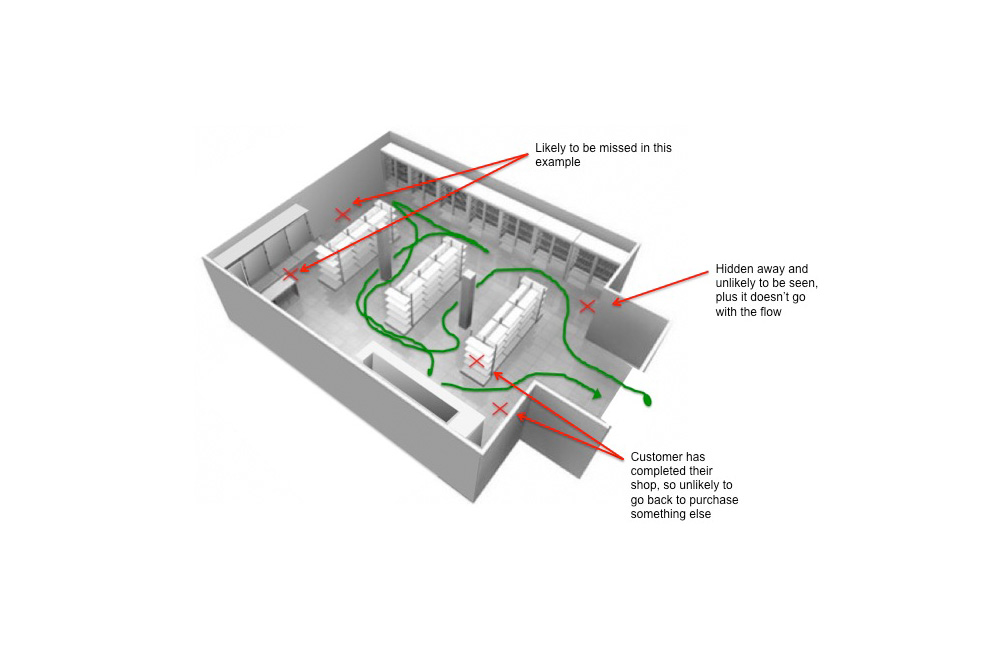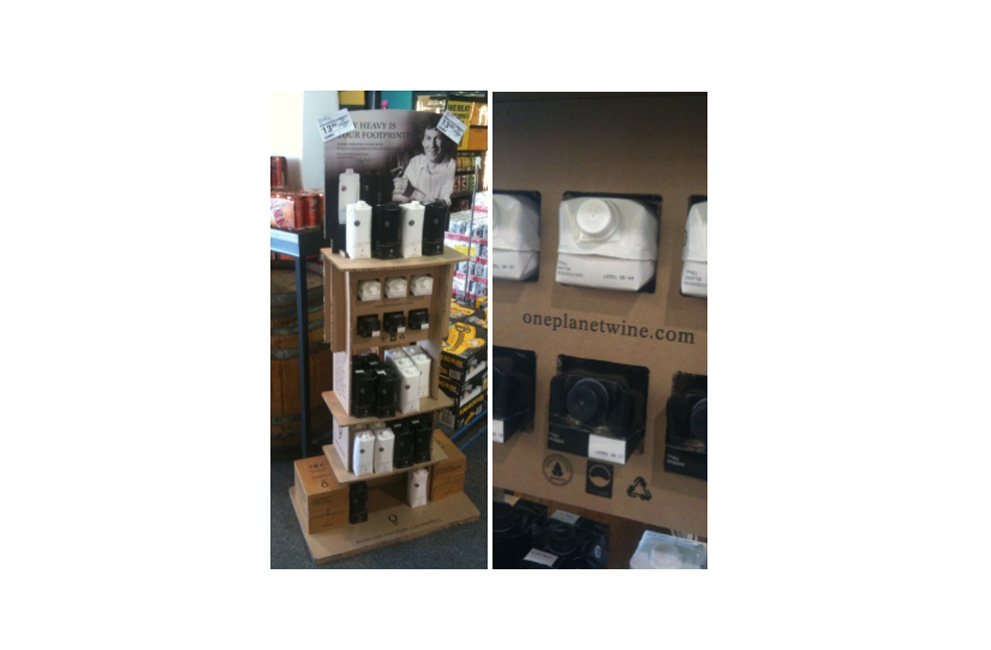
Shopper Marketing
Having an understanding of how shoppers behave in various environments allows us to advise your clients on the right touchpoints to invest in.
This not only ensures value for money, but the best return on investment for their spend.
Of course, there are a multitude of factors that determine what the best touchpoints would be for any given project (e.g. brand life stage, brand strategy, channel, budget etc.), but there are some general rules that can be followed:
- Shoppers tend to use leading brands iconic triggers (colour, logo, shape, typography) to navigate different categories.
- Clear, bold pricing helps shopper decision-making.
- Ensure availability of stock – out of stock products will frustrate the shopper and stimulate brand switching.
- Shoppers can be disrupted through relevant and strategically placed displays (secondary or on-shelf especially) e.g. Counter units are great for impulse purchase – but shouldn’t offer expensive items.
Shopper flow is a science in itself – but having a basic understanding can dramatically increase product awareness (and sales) by clever display placement. In this example – we can see a typical shopper path to purchase…

With this knowledge, we can immediately identify where the ‘disruption’ opportunities are…

Any type of product display at the entrance is generally not a good idea, as shoppers don’t want interruptions too early before getting to their ‘mission’ (the reason they’re in the store in the first place).
Once they’ve ticked off a few things on the list and they are more relaxed in the store – they are more receptive to promotions, displays etc. so these areas are good to exploit.
Moreover, we can also identify where not to place displays…

In addition – it’s imperative that the design and substrates used in the display are aligned with what the brand stands for and the customer’s perception of the brand.
e.g. you wouldn’t want (or expect) to see brands that have an ethical or green strategy/platform, to be housed in a predominantly plastic display.
This example is great – a wine company that uses sustainable packaging displayed in a completely recyclable free standing unit (plus the design is eye catching and very clever).

Clear wayfinding signage is also a major factor in determining shopper behaviour.
Did you know – in a smaller retail outlet, if a shopper finds what they are looking for within 10 seconds – they are twice more likely to continue shopping and buy more, than if they find it in 11-20 seconds.
So strategically:
- Help the shopper find what they’re looking for quickly.
- Site secondary displays (FSU’s for example) in areas that ‘go with the flow.’
- Have clear pricing.
- Ensure product availability and properly merchandised units.
Article by CraigS

Comment
What a fantastic article! So insightful and informative – I will definitely keep this in mind and refer to it during conversations with my clients.
Thank you Xanita and CraigS!